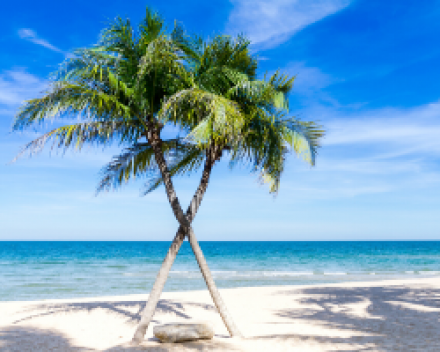Discover Hue Imperial City: Vietnam's Timeless Royal Treasure
2Discover the enchanting Hue Ancient Imperial City, Vietnam, a UNESCO World Heritage site. Immerse yourself in the rich history and culture of the Nguyen Dynasty. Explore stunning royal palaces, tranquil gardens, and sacred tombs. A must-visit for history buffs and culture enthusiasts!
Hue Ancient Imperial City, a UNESCO World Heritage site, stands as a captivating testament to Vietnam's rich imperial past. Once the heart of the Nguyen Dynasty, this enchanting city boasts a mesmerizing blend of history, culture, and natural beauty. Immerse yourself in the grandeur of royal palaces, find tranquility in serene gardens, and pay homage at sacred tombs. Discover the allure of Hue with Handspan Travel and embark on an unforgettable journey through time.
Introduction to Hue Imperial City: A Journey Through Vietnam's Royal Legacy
Located in central Vietnam, Hue once served as the imperial capital where the Nguyen Dynasty reigned for 143 years. A tangible legacy of this era, the Ancient Imperial City stands as a magnificent testament to Vietnam's rich history and culture.
Built in the early 18th century, this sprawling complex is encircled by imposing fortified walls and a moat. Its intricate architecture reflects the opulence and power of the Nguyen emperors. Within its confines, visitors can explore lavish palaces, serene gardens, and sacred temples that offer a glimpse into the grandeur of imperial life.
The Citadel, the emperor's residence, and the Forbidden City, the private domain of the royal family, are highlights of the complex. These architectural marvels showcase exquisite craftsmanship and detailed ornamentation, providing invaluable insights into Vietnam's feudal past.
As a UNESCO World Heritage site, Hue Ancient Imperial City is a must-visit destination for history buffs, culture enthusiasts, and anyone seeking to immerse themselves in the heart and soul of Vietnam.
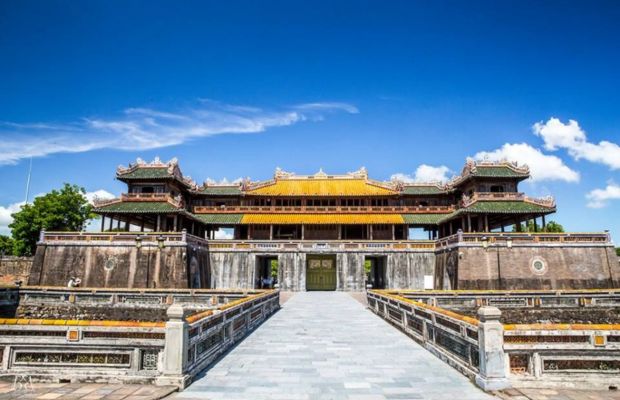
Hue Imperial City from the outside
The Rich History of Hue’s Ancient Citadel
Hue Imperial City, a grand citadel constructed under Emperor Gia Long in 1805, stands as a monumental achievement of the Nguyen Dynasty. Initially, the royal court mobilized around 30,000 workers to undertake the massive task of building river embankments and canals. By 1818, this workforce had swelled to 80,000, focusing on fortifying the East, West, South, and North sides with brick cladding.
In 1831-1832, Emperor Minh Mang further enhanced the citadel’s defenses by ordering the construction of additional walls equipped with cannons, solidifying the structure of the Imperial City. These fortifications were crucial in protecting the citadel from potential invasions.
Beyond its military significance, Hue Imperial Citadel was also the cultural and political heart of Vietnam. It served as the nation's capital until 1945, marking the end of its role when the country was divided into North and South Vietnam.
Architectural Marvels of the Hue Imperial City
The Hue Ancient Imperial City features a square-shaped layout with three main enclosures: the Citadel, the Imperial City, and the Forbidden Purple City. Stretching over 10 kilometers in circumference, the citadel is a distinctive fusion of French fortress design and Eastern architectural elements.
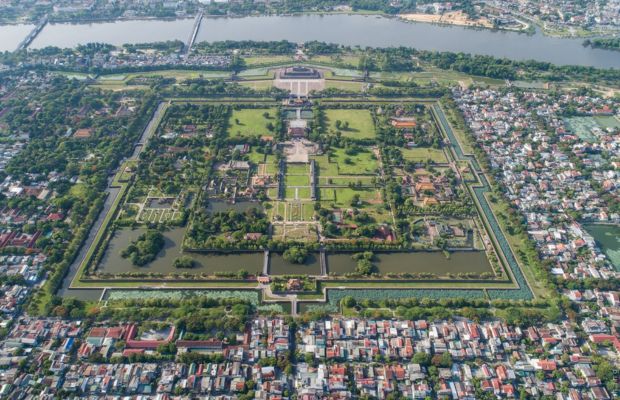
Hue Imperial City From Above
In line with Feng Shui principles, the citadel is backed by Ngự Bình Mountain, which rises over 100 meters with a flat summit, acting as a natural protective barrier. Flanking the citadel are Cồn Hến and Cồn Dã Viên, symbolizing the Green Dragon and White Tiger, respectively, which together create a harmonious balance of Yin and Yang. The broad Hương River flows between these two hills, bringing life force to the city.
The complex includes 13 main gates, with two accessible by water. Within the Citadel, houses for commoners and officials were located. The most significant area, however, is the Imperial City, where the king and royal family lived and conducted their affairs.
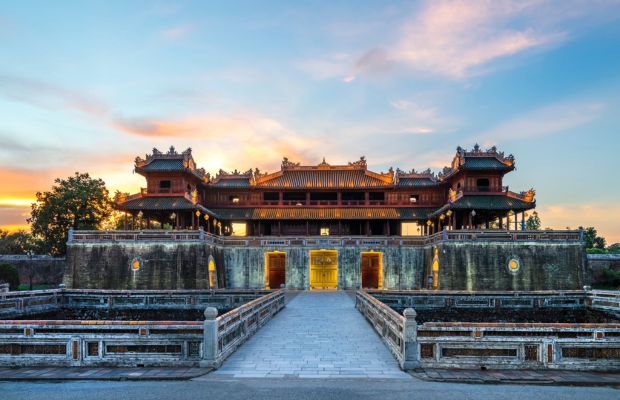
Ngo Mon Gate functioned as the majestic entrance to the Imperial Citadel
Imperial City
The Imperial City is the second inner wall of the Hue Citadel, serving as the residence of the emperor and the royal family, as well as the working place of the imperial court. Additionally, the Imperial City of Hue is a place of worship for the ancestors and emperors of the Nguyen Dynasty.
Construction of the Imperial City began in 1804, but it wasn’t until the reign of Emperor Minh Mang in 1833 that the entire system of palaces, with over 100 structures, was fully completed. The Imperial City has four gates, one on each side, with the main gate, Noon Gate (Ngọ Môn), located to the south.
Inside the Imperial City, you’ll find the Throne Palace (Điện Thái Hòa), where royal meetings were held; the area for ancestral temples; and the Forbidden Purple City, the living quarters of the emperor and the royal family. The Imperial City and the Forbidden Purple City together are commonly referred to as the Đại Nội.
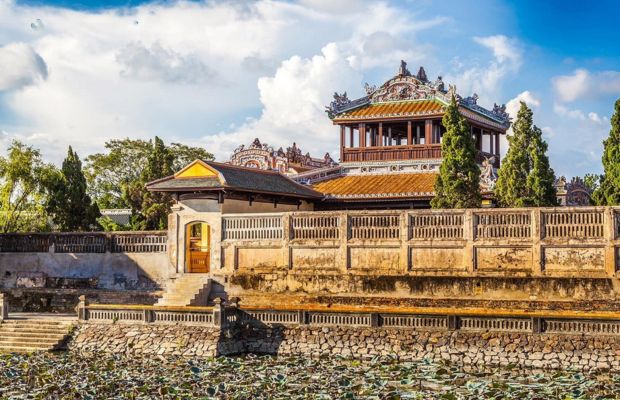
Buildings Inside Hue Imperial City
Forbidden Purple City
The Forbidden Purple City is the innermost enclosure, located within the Imperial City. Originally called the Palace City, it was constructed in the 2nd year of Emperor Gia Long's reign (1803) and was renamed the Forbidden Purple City in the 2nd year of Emperor Minh Mang's reign (1821).
The city is rectangular, with the north and south sides measuring 341 meters and the east and west sides measuring 308 meters, giving it a total perimeter of 1,298 meters. The main entrance on the southern side is Đại Cung Gate. On the northern side, there are two gates: Tường Loan and Nghi Phụng. During the reign of Emperor Bảo Đại, after the construction of the Ngự Tiền Office, an additional gate called Văn Phòng was opened. On the eastern side, there were initially two gates: Hưng Khánh and Đông An. Later, Đông An Gate was sealed, and Duyệt Thị Gate was added to the east of Duyệt Thị Đường. The western side has two gates: Gia Tường and Tây An.
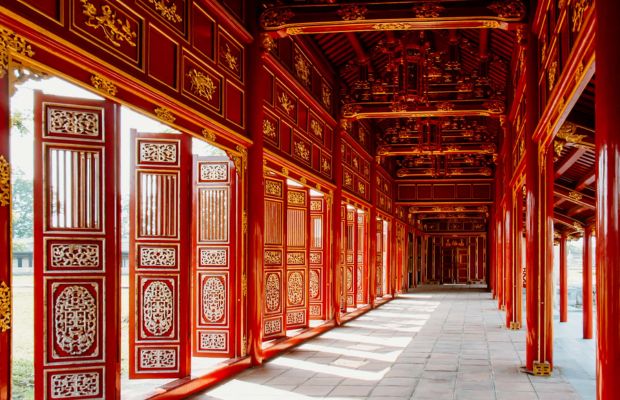
Inside the Forbidden Purple City
Inside the Forbidden Purple City, there are dozens of architectural structures of varying sizes, divided into multiple areas. Today, most of these structures have deteriorated over time or were destroyed during the resistance against the French in 1947, and later by American air raids, including B-52 bombings, in 1968. Notable buildings that suffered damage or destruction include Kiến Trung Palace, Cần Chánh Palace, Càn Thành Palace, and many other residences.
What are the prominent features of Hue Imperial City?
Vietnam’s Best-Preserved Royal Heritage
Hue Imperial Palace stands as one of the most well-preserved royal relics in Vietnam, despite its existence spanning over two centuries. It has endured the ravages of time and the devastation of war, maintaining much of its original grandeur. The palaces, fortifications, and tombs within the complex remain largely intact, visiting Hue Imperial City essential for anyone interested in exploring Vietnam’s rich cultural heritage.
A Blend of Eastern and Western Military Architecture
Hue Imperial City is distinguished by its unique military architecture, which seamlessly blends Western and Eastern design principles. It incorporates the defensive features typical of French fortresses while adhering to the yin-yang balance and Five Elements theory, creating a rare and remarkable architectural style.
The Magnificent Royal Tombs of the Nguyen Dynasty
The royal tombs of the Nguyen Dynasty emperors are masterpieces of feng shui, meticulously designed with attention to the surrounding rivers, mountains, lakes, and ponds. Each tomb is typically divided into two main sections: the burial area, where the emperor’s remains are interred, and the temple area, featuring an exquisite array of pavilions, halls, and palaces. These tombs, often used as retreats by the emperors during their lifetimes, showcase a unique and exceptional artistic style, making them a remarkable feat of architecture.
A Treasure Trove of Royal Artifacts
The Hue Royal Antiquities Museum, established in 1923 within the Imperial City, holds an extensive collection of historical artifacts crafted from pottery, porcelain, bronze, stone, and horn. These treasures not only display the artistic styles of the feudal era but also bear the marks of history, offering visitors a deeper connection to the past.
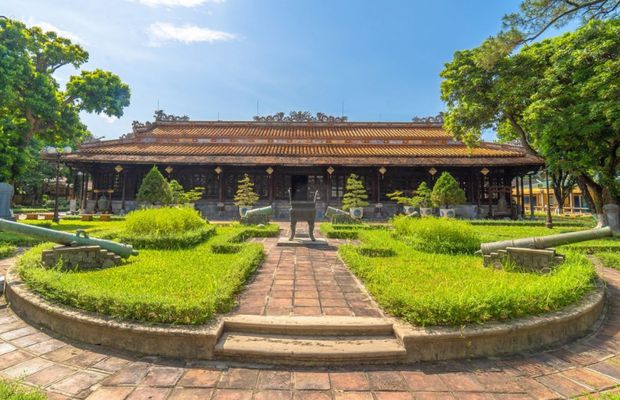
Hue Royal Antiquities Museum
A Venue for Historic Festivals
Hue Imperial City has long been a site for significant national events organized by the authorities. Historically, each festival had its own set of regulations that both the people and the royal family followed. Today, these festivals are recreated to offer visitors a glimpse into the imperial court ceremonies of the past, bringing ancient traditions to life.
The Cultural Legacy of Hue Royal Court Music
Hue royal court music, recognized by UNESCO as an intangible cultural heritage, reflects the cultural richness of Hue. This music was traditionally performed during coronation ceremonies, funerals, and other important events in the imperial court. It remains the only form of traditional court music still preserved in Hue. The Duyet Thi Duong Royal Theater, located within the Imperial City, offers visitors the chance to experience the enchanting sounds of Hue royal court music. The historic theater has been carefully restored and now hosts a variety of performances, including court dances, classical drama excerpts, and royal court music.
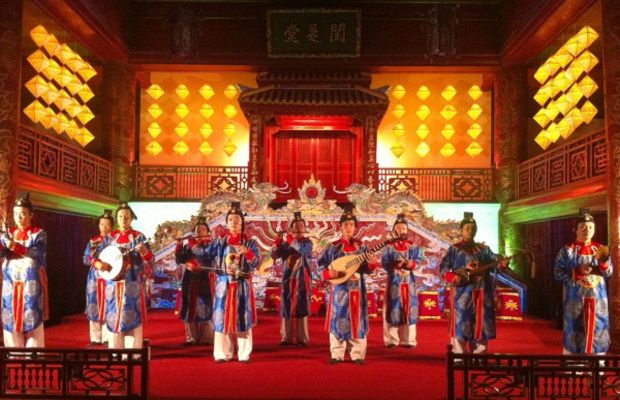
Hue Royal Court Music Performance
Convenient Ways to Visit Hue Imperial City
To reach Hue Imperial Citadel conveniently, you first need to get to Hue City. Thanks to its well-developed transportation infrastructure, there are several options for traveling to this historic capital, including motorbikes, buses, trains, or flights.
Once you arrive in Hue, getting to the Imperial Citadel is straightforward. You can easily rent a motorbike or take a taxi to cross Phu Xuan Bridge, then pass through Ngan Gate to reach the entrance of Hue Imperial City. This route offers a direct and hassle-free way to explore this iconic site.
Hue Imperial City is a stunning showcase of Vietnam’s royal heritage, offering a deep dive into its rich history and architectural splendor. From its well-preserved structures to its unique blend of Eastern and Western designs, Hue provides a memorable experience for all visitors.
For more details and to plan your visit, check out Handspan Travel’s website here. Let us help you uncover the magic of Hue and make your journey truly unforgettable.
__logo.png)
__hanoi-water-puppets.jpg)
__angkor-wat-blue-reflections.jpg)
__vientiane-buddha-park-monks.jpg)
__bagan-dhammayazika-dusk.jpg)
